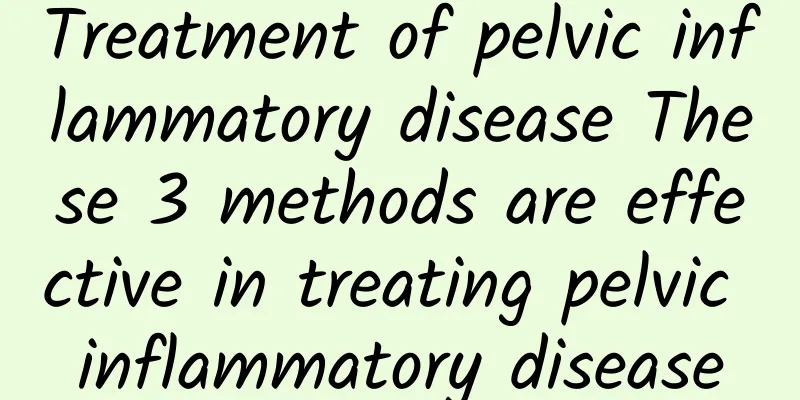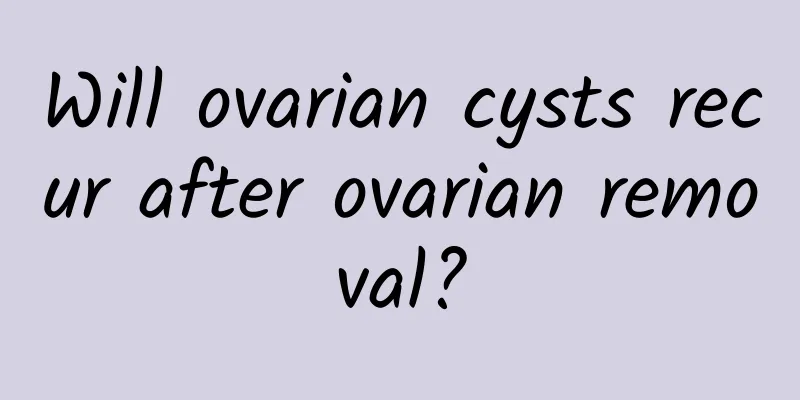Treatment of pelvic inflammatory disease These 3 methods are effective in treating pelvic inflammatory disease

|
Pelvic inflammatory disease refers to inflammation of the female pelvic reproductive organs, the connective tissue around the uterus, and the pelvic peritoneum. Chronic pelvic inflammatory disease is often caused by incomplete treatment of the acute phase. Because of its long onset and stubborn condition, let's take a look at the treatment methods for pelvic inflammatory disease . Treatment of pelvic inflammatory disease 1. Drug treatment Pelvic inflammatory disease is a common gynecological disease, which can be divided into acute and chronic. The symptoms of acute pelvic inflammatory disease are rapid onset, severe condition, obvious abdominal pain, and often accompanied by high fever. Chronic pelvic inflammatory disease is mostly caused by incomplete treatment of acute pelvic inflammatory disease and prolonged illness. Sometimes it can also be hidden and there is no history of acute pelvic inflammatory disease. When a person's body resistance is reduced, patients with chronic pelvic inflammatory disease may have acute attacks. Many patients blindly take painkillers, or only take some antibacterial and anti-inflammatory drugs, but antibiotics are the main treatment measures for acute pelvic inflammatory disease, including intravenous infusion, intramuscular injection or oral administration. Spectrum antibiotics should be used in combination with anti-anaerobic drugs, and attention should be paid to the sufficient course of treatment. And it can be combined with traditional Chinese medicine treatment in order to achieve better therapeutic effects; but the treatment time of traditional Chinese medicine is long, and the efficacy is relatively slow; a few patients can adhere to the implementation of traditional Chinese medicine treatment. 2. Surgical treatment If the patient has pelvic inflammatory disease, surgical treatment is feasible for masses such as hydrosalpinx or tubo-ovarian cysts; surgical treatment is also suitable for patients with small infection foci that repeatedly cause inflammation. The principle of surgery is to completely cure the disease and avoid the chance of recurrence of residual lesions. Adnexectomy or salpingectomy is performed. Surgical treatment directly targets the diseased area and can directly remove the affected area. However, most patients with pelvic inflammatory disease are young women, and surgical treatment methods will cause damage to the patient's ovaries. 3. Physical therapy Hot water sitz bath can reduce pelvic congestion, achieve anti-inflammatory, analgesic and local cleansing effects, thus facilitating the recovery of pelvic patients. It can also improve the nutritional status of tissues and increase metabolism, thus facilitating the absorption and disappearance of inflammation. Commonly used methods include short wave, ultrashort wave, ion penetration, wax therapy, etc. |
<<: What are the dangers of appendix orchitis? Symptoms of appendix orchitis
>>: Is cervical precancerous lesions caused by cervical HPV infection?
Recommend
Is it normal for the color of the menstrual period to be bright red? If it is stable, it is normal
If the menstrual blood is bright red, it is norma...
What are the main harmful manifestations of vaginitis?
Many women know about vaginitis. In clinical prac...
Amenorrhea should be prevented in case of polycystic ovary syndrome
One of the symptoms of polycystic ovary syndrome ...
Does curettage mean that the cure rate of medical abortion is low?
Nowadays, many young women do not pay attention t...
What drugs can treat endometrial tuberculosis?
Which drugs can treat endometrial tuberculosis? A...
What exactly causes cervicitis? Is lower abdominal pain caused by cervicitis?
Cervicitis may cause impaired sexual function, pa...
What are the topical drugs for chronic cervicitis?
Topical medications for chronic cervicitis mainly...
Is cervical warts an infectious disease?
Cervical condyloma acuminatum is very contagious ...
What are the treatments for vulvar leukoplakia?
What are the treatments for vulvar leukoplakia? C...
Explain the early symptoms of pelvic inflammatory disease
Pelvic inflammatory disease is a common gynecolog...
Causes of pelvic inflammatory disease in unmarried women
Pelvic inflammatory disease is a disease that fem...
How can women prevent cervical erosion completely and effectively?
Women with cervical erosion will have various sym...
The standard for "middle-aged greasy women" has been announced. Women over 45 may wish to check whether they have been caught
Ms. Zhang, 45, is busy with work and family every...
What is painless abortion? Is it really painless?
Painless abortion is one of the most common types...
The Chinese herbal medicine formula of Herba Agrimoniae can effectively treat severe cervical erosion
In addition to actively cooperating with clinical...









